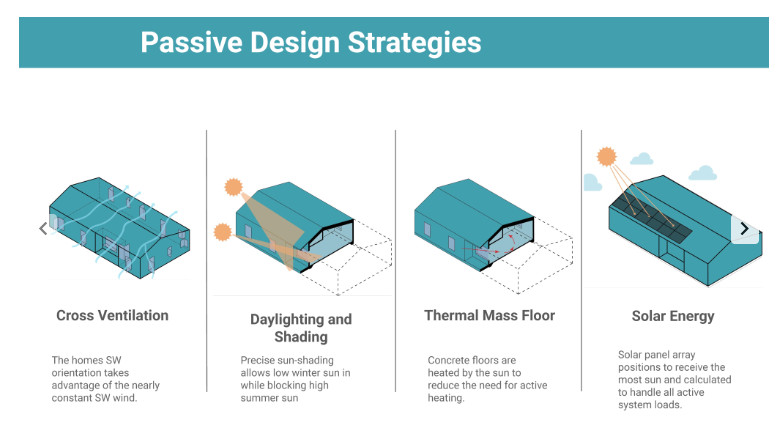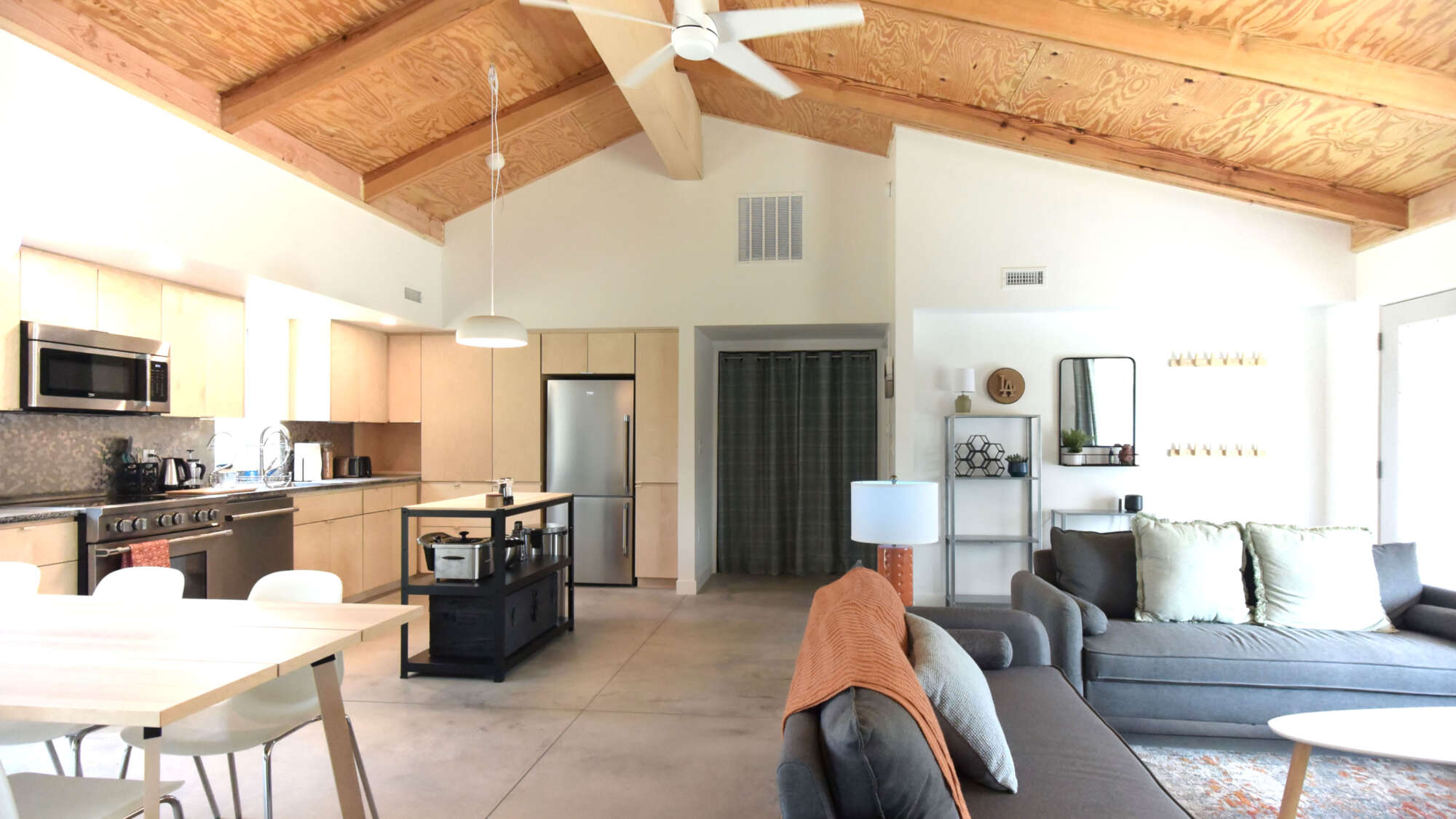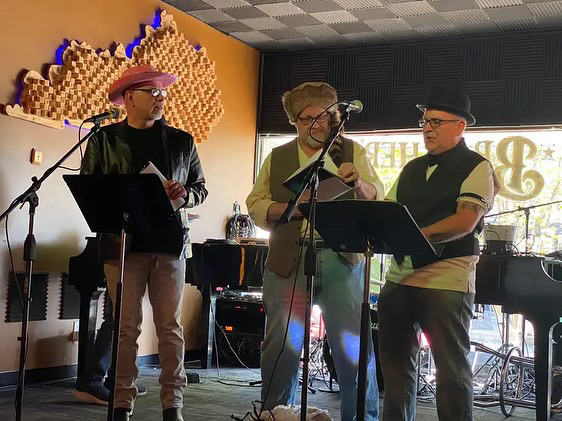High heat calls for K-State’s cool community housing design
As record-breaking summer temperatures return year after year with no end in sight, the average cost to cool a home is rising to levels that are out of reach for many Americans. The number of households experiencing energy insecurity is increasing, which disproportionally affects renters and households that include children or vulnerable adults.
Michael Gibson is an associate professor and faculty lead of the Net Positive Studio, a service-learning architecture course for students completing their fifth and final year of the master’s program through K-State’s College of Architecture, Planning and Design. He knows that a little strategic planning can go a long way in keeping homes comfortable with less reliance on utilities, and each year he sends a new crop of students into the workforce armed with the Net Positive Studio’s lessons on passive solar and human-centric home design. (Learn more about the principles of net-positive building in Proud of the house we built.)
Each year, students design and help construct affordable and efficient housing that works with its surrounding climate to minimize the effects of temperature extremes.
Gibson shed some light on the many ways community development and smart architecture can partner to beat the heat.
Can you explain the climate-housing connection?
Extreme temperatures are a real concern for low-income groups, but I think a lot of people aren’t aware that the problem has reached a point that also affects the middle class, who could previously make ends meet. It was recently reported that one in five middle-income households making up to $100,000 per year had trouble paying their utility bills. With costs climbing out of control, housing can be a real drain on people’s ability to live and thrive. And then that becomes an issue for communities.
But housing can also be a solution.
When we do energy modeling on the passive high-performance houses we create, we design them to coexist with the climate in Kansas. It’s possible to have a house that uses no heating or cooling for over half the year. The systems aren’t running at all — everything’s off and it’s quiet, but comfortable.
That goes hand-in-hand with another feature that makes our homes more efficient. They have a small footprint, so spacious floor plans and outdoor spaces that make the area feel bigger play a big role in our designs. Outdoor spaces are an extension of the house where people can gather socially, eat, relax, do their homework or just escape whatever’s going on in the house. It’s also a place where you can interact with your neighbors and connect with your community.
So, few homes are being built to meet sustainability goals yet remain affordable — you really don’t see that combination very much anywhere, especially in Kansas. We’re doing this to prove it can be done.

How can the Net Positive Studio help curb the crisis?
Community-based development organizations such as Habitat for Humanity has been there to help lower the cost of housing and increase access to it for decades, but the main thing these groups do is gather all those financial and development tools together to make home ownership possible.
Our studio saw an opportunity to provide nonprofit community development with good, sustainable design to help lower utility costs. We wanted to set that affordable housing bar higher and show that you can also have a very efficient house that uses passive design principles to leverage daylight and natural ventilation and outdoor access.
How do you tackle affordability?
We start by talking about the budget of the project in realistic terms. What is our affordability target? Who’s going to live in this house? And what is their income, and what can they afford in utility expenses each month as a percentage of their income? Then comes the design and engineering legwork, when we plan the performance of the house.
The students learn a lot from that, too, because many of them don’t know how mortgages work. And they don’t understand how personal credit works, and why people have trouble paying for housing.
What’s your advice to help the rest of us dial down our utility usage and reduce strain on the grid during temperature extremes?
In building science, we often talk about acclimation, meaning your perception of temperature and comfort changes as your body gets used to the environment around you.
We Americans tend to think that if we’re sweating, there’s something horribly wrong. And that’s something that we just have to get over. It takes you about 30 to 60 minutes to acclimate to a temperature change. Give it some time and relax. Just let your metabolism drop. You’ll produce less heat because you’re not burning energy.
Let yourself acclimate to an indoor temperature between 75 and 80 degrees, which is the widely recommended summer setting for your thermostat. Each degree below this will increase your utility bills by 3%.
A moderate breeze from a fan or other source will work with the body’s systems for releasing heat through our skin and increase our comfort range by up to 6 degrees, making higher temperatures feel comfortable.
Are there other tips we can try at home or at work?
Keep the sun’s heat out by shading windows, especially those that face east and west. If you have trees and vegetation that shade your house, keep them healthy! A large tree can cut your cooling bills down by 25% or more.
Limit indoor heat sources from electric lights, appliances and large electronics that make your air conditioner work harder. Choosing daylight over electric lights is a bonus because it conserves electricity and reduces heat. If you don’t need something, power it down or unplug it.
Indoor humidity also adds to the work your AC must do. If you have them, use ventilation fans in your bathrooms during showers and run them for a minimum of 15 minutes afterward. Do the same thing if you have a kitchen hood fan that ventilates to the outside, and make sure your clothes dryer is properly vented.
Keep up to date with your HVAC filter changes (every three months is the typical interval), because dirty filters strain your system. Have your HVAC equipment inspected, cleaned and serviced every year or so to keep it in optimal working condition and prolong its life.
Finally, the outdoor spaces we design into our houses are key because the more you go outside, the more acclimated you become to the climate of that season and the less you’ll be tempted to crank up the AC or heater.
Support fellowships for fifth-year students
Help more students devote their time and creativity to community-building experiences like the Net Positive Studio by supporting the College of Architecture, Planning and Design’s fifth-year fellowships.




